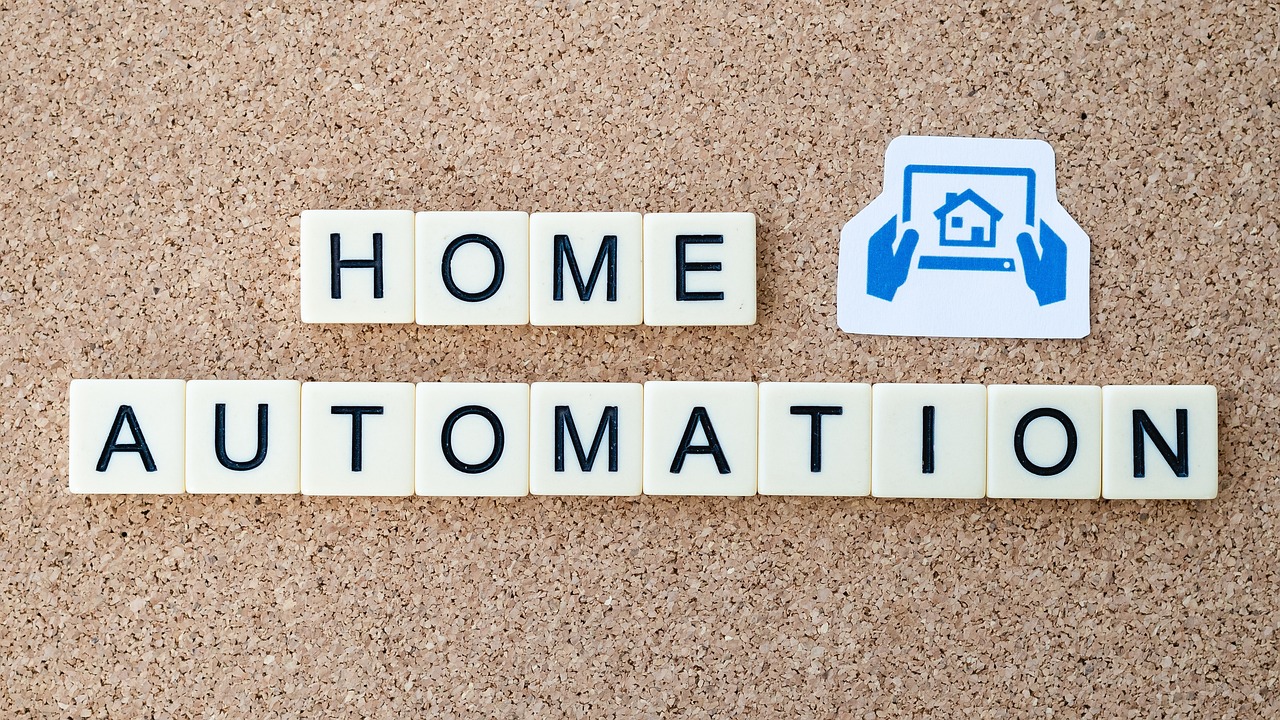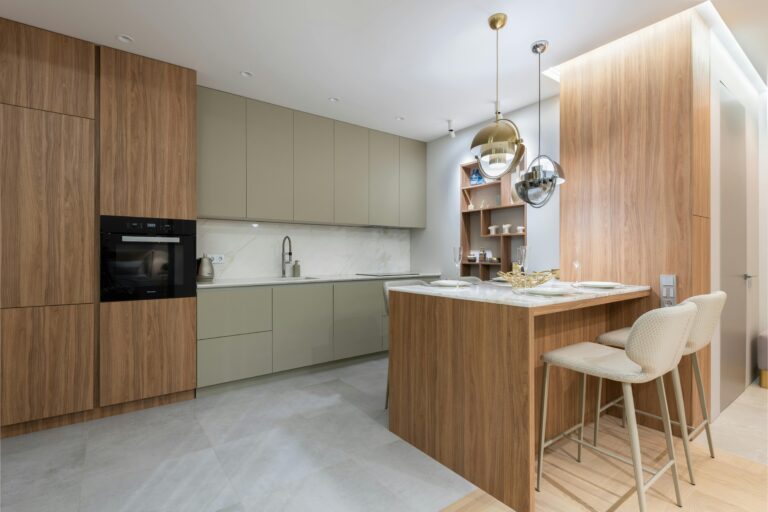2025 Home Design Trends: Bringing Together Green Living, Smart Tech, and Easy Style
Life’s pace is changing, and our homes too. By 2025, home means more than just shelter; it’s a lively balance of personal and Earth care. Picture waking up in a room where the air changes with pollen levels, your coffee is made from a counter of old coffee bits, and every furniture piece tells a story of how it was made. This isn’t just a dream—it’s the soon reality of design, blending sustainability, tech, and calm Japandi minimalism for a new modern living.
Green Living Takes the Lead: Upgrades That Keep Style
Gone are the days when eco-design was just a special look. In 2025, green living will be the key. People want materials and systems that look good and do good, showing that fashion and values can go hand-in-hand.
Carbon-Negative Materials: Building From the Future
The next wave of building stuff isn’t just neutral—it’s regenerative. Look at hempcrete: this light alternative to concrete, crafted from hemp fibers and lime, pulls in more CO2 over its life than it gives out. It fights fire, lets air through, and is just right for keeping moisture in check. Also, mycelium insulation—made from mushroom roots—is popping up in things from wall panels to noise-reducing tiles. Firms like BioMason are breaking new ground with bricks made by bacteria that firm up sand into tough builds, and they grow in days, skipping traditional ovens.
But the change doesn’t end with walls. Countertops are turning eco-friendly, too. Companies like IceStone make tops from all recycled glass and concrete, while PaperStone crafts them from squished recycled paper and resin for a cozy, rock-like feel finish. Floors are changing up as well: Mogu offers tiles from farm leftovers and mycelium that are corky soft but have a fancy terrazzo look.
Energy Systems That Work Smarter, Not Harder
Solar tech has moved past its bulky and outdated image. The Tesla Solar Roof stands out, with shingles looking like old-school materials like slate or terra cotta and making power. Yet, rivals are on the rise: SunStyle brings solar roof tiles in custom European styles, and Ubiquitous Energy is leading with see-through solar windows that also snag energy. For heating and cooling, geothermal systems are becoming the gold standard. By tapping into the Earth’s consistent underground temperature, these systems reduce energy use by up to 65% compared to traditional HVAC. Pair them with a SPAN Smart Panel, which optimizes energy distribution across your home, and you’ve got a self-regulating power ecosystem.
Water Wisdom: From Rainwater to Greywater
Water saving isn’t just cutting back—it’s about using it wisely. New rainwater systems, like Rainwater Management Solutions, use cool, hidden tanks that gather and clean water for watering plants or even for internal use. Inside, greywater setups are improving a lot. For example, the Hydraloop system recycles most home water from showers and washers, cleaning it with UV light and natural processes for toilets or gardens.
Fixtures are smarter now, too. Kohler’s Anthem shower system sets your water heat and force by app, and Moen’s Smart Shower watches how much you use and tells you about leaks. Outside, dry plant designs are changing with AI watering tools like Rachio, adjusting to weather reports to set the best watering times.
Japandi Minimalism: The Intersection of Tranquility and Functionality.
In a noisy world, the 2025 home is a quiet spot. Meet Japandi—a design style that blends Japanese wabi-sabi (the beauty of imperfection) with Scandinavian functionality. This approach is not just about removing stuff; it’s about creating a space that nourishes the soul.
The Japandi Way: Warm Meets Simple
The charm is in the mix of different things. Imagine a living room with a low, Danish-modern sofa in natural wool facing a chabudai (traditional Japanese tea table) made of old ash wood. The walls are made of hand-made plaster, rough like shou sugi ban (burned wood) touches, while an old AJ Lamp from Arne Jacobsen gives a warm, pointed light. Color shades use earthy neutrals—like rust, dark yellow, and soft grays—with some blue textiles for more feel.
Flooring plays a key role: wide-plank oak floors, treated with natural oils, contrast with tatami mats in meditation corners. Window treatments are minimalist—think linen roller shades or sudare bamboo blinds that filter light into delicate patterns.
Sustainable Craftsmanship
Japandi demands authenticity. Furniture makers such as Carl Hansen & Son bring back old designs from mid-century. They use wood certified by FSC and natural covers. At the same time, in Japan, craftsmen get known around the world for techniques like kintsugi (repairing ceramics with gold-dusted lacquer) and sashimono (joinery without nails) For smaller accents, consider:
- Lighting: Waka Waka lamps made from washi paper and bamboo
- Textiles: Kuno blankets woven from Japanese organic cotton
- Decor: Studio Koya vases shaped from local clay and glazed with rice ash
Smart Storage Solutions
Clutter is the enemy of mindfulness. Japandi interiors employ clever storage that disappears into the architecture:
- Furniture: Nitori modular shelving with hidden compartments
- Kitchens: IKEA SEKTION cabinets with integrated compost bins
- Bathrooms: TOTO vanities featuring pull-out laundry hampers
The goal? A space that feels curated, not cramped—where every object has purpose and beauty.
Smart Home Tech: Invisible Intelligence for Modern Living
The smart homes of 2025 don’t scream “tech”—they whisper. Devices blend into backgrounds, learn from habits, and prioritize health without fanfare.
AI That Learns Your Habits
Imagine a home that:
- Preheats the oven as you start chopping vegetables (thanks to June Oven cameras)
- Adjusts lighting hues to match your circadian rhythm (via Philips Hue)
- Suggests recipes based on fridge inventory (courtesy of Samsung Family Hub)
Systems like Google Nest now predict your schedule by syncing with calendar apps, while Apple HomeKit uses geofencing to arm security systems when you leave. The next frontier? Emotion-sensing AI that adjusts environments based on stress levels, like the Mui Board, which displays calming animations when it detects raised voices.
Health-Conscious Automation
Post-pandemic homes are doubling as wellness hubs:
- Air Quality: Dyson Purifier Cool detects pollutants and syncs with smart vents
- Water: LARQ self-cleaning water bottles and pitchers use UV-C light
- Sleep: Eight Sleep Pod mattresses regulate temperature and track sleep stages
Even showers are getting smarter. Kohler’s Anthem system lets you save personalized settings for steam levels and music playlists, while Methven Aio showerheads infuse water with air to reduce usage by 50%.
Security That Blends In
Gone are the days of obvious cameras. Today’s systems are discreet:
- Camouflaged Sensors: Canary devices masquerade as sleek table lamps
- Biometric Locks: Lockly offers fingerprint and palm-vein recognition
- Portable Systems: SimpliSafe renters’ kits use adhesive sensors
For families, Amazon Astro patrols homes autonomously, sending alerts if it detects open windows or unusual activity.
The Intersection: Where Trends Collide
The most groundbreaking homes of 2025 won’t isolate these trends—they’ll fuse them.
Picture a kitchen where:
- Cabinets from Reform use recycled ocean plastic
- A Bora Cooktop with built-in downdraft ventilation eliminates the need for a hood
- Countertops embedded with LuminAID solar panels charge devices via USB
Or a bathroom where:
- TOTO Neorest smart toilets analyze waste for health insights
- Walls are tiled with ECOR panels made from agricultural waste
- Mirrors double as HiMirror skincare analyzers
Key Comparisons: Traditional vs. 2025 Innovations
| Feature | Traditional Approach | 2025 Innovation | Planetary Impact |
| Lighting | LED bulbs | Biodegradable algae lamps (Living Light) | Reduces e-waste, absorbs CO2 |
| Flooring | Hardwood or carpet | Mycelium-based tiles (MycoWorks) | Carbon-negative, renewable |
| Heating/Cooling | Gas furnace, AC unit | Geothermal + solar roof (Dandelion Energy) | 70% lower emissions |
| Furniture | Mass-produced particle board | Modular designs (Floyd Home) | 100% recyclable, zero landfill waste |
| Water Systems | Low-flow showerheads | Greywater recycling + smart meters (Hydraloop) | Cuts household water use by 45% |
How to Start Your 2025 Home Makeover
- Audit Your Space
Begin with a single room. Replace synthetic materials with natural alternatives:
- Rugs: Swap polyester for The Citizenry jute or hemp
- Paint: Choose zero-VOC options like Clare or Backdrop
- Decor: Introduce Ben Medansky ceramics made from reclaimed clay
- Invest in Timeless Tech
Prioritize devices that grow with your home:
- Energy: Sense Energy Monitor tracks real-time usage
- Lighting: Nanoleaf modular panels adapt to any layout
- Appliances: LG ThinQ AI-powered washers adjust cycles to fabric type
- Embrace Imperfection
Mix old and new:
- Pair a Vitra Eames lounge chair with a hand-mended kintsugi vase
- Hang a Gantri 3D-printed lamp beside a vintage ukiyo-e print
- Support Ethical Brands
- Furniture: Vestre uses 100% renewable energy in production
- Bedding: Buffy creates comforters from recycled plastic bottles
- Accessories: Pela compostable phone cases fund ocean cleanup
Final Thoughts: Design as a Daily Choice
The houses of 2025 are not still—they change, grow with our lives, what we care for. By picking stuff that fixes the Earth, technology that makes us feel better, and looks that make us happy, we’re not just making spaces look good; we’re building lasting things. Fixing up a loft or making a rental feel new, think: keeping things green isn’t just an end goal, and how it looks isn’t just about cost. It’s about being purposeful—one aware decision after another.
Ready to transform your space? Share your first eco-smart upgrade with #2025HomeGoals, and let’s build a greener future, room by room.


